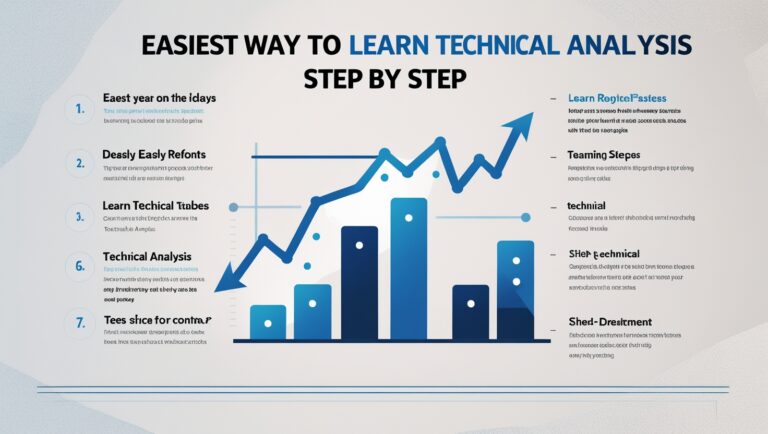Asset Allocation Strategies for Every Age Group
Asset Allocation Strategies for Every Age Group
Discover the best asset allocation strategies for every age group—whether you’re in your 20s, 30s, 40s, or retirement years. I’ll break it down step by step, share my personal insights, and show you how the right balance between stocks, bonds, and other assets can help you build long-term financial security.

Table of Contents
Why Asset Allocation Matters
When I first started investing, I thought picking a few good stocks would be enough. But over time, I realized that asset allocation is what truly drives long-term results. Without a clear strategy, you expose yourself to unnecessary risks.
The right mix of assets depends on your age, goals, and risk tolerance. For me, once I started adjusting my portfolio based on life stages, everything became clearer—and my investments grew with more consistency.
Asset Allocation in Your 20s: Growth Above All
In your 20s, time is on your side. This is when you can afford to take risks because you have decades to recover from downturns.
When I was in this stage, I leaned heavily into stock ETFs. I wanted maximum growth, even if it meant volatility. A portfolio tilted 90% toward stocks and 10% toward bonds or cash made sense for me.
This is also the time to focus on dollar-cost averaging—investing consistently into the market regardless of price. It builds discipline and helps your wealth compound faster.
Asset Allocation in Your 30s: Balancing Growth and Stability
By your 30s, financial responsibilities often increase—maybe you’re saving for a home, raising a family, or paying off debt. At this stage, a slight shift toward stability helps.
Personally, I began allocating closer to 80% stocks and 20% bonds. This mix allowed me to keep growing my money while reducing exposure to big market swings.
I also started including some bond ETFs as a cushion. It gave me peace of mind, especially when the market turned volatile.
Asset Allocation in Your 40s: The Balanced Stage
Your 40s are about balance. You’re no longer early in the game, but retirement isn’t right around the corner either.
A 60/40 split between stocks and bonds worked well for me in this phase. I still wanted growth but also wanted stability to protect the wealth I had already built.
Adding real estate investment trusts (REITs) or dividend-paying ETFs at this stage also helped me diversify further.
Asset Allocation in Your 50s and 60s: Focus on Preservation
Once you’re in your 50s and early 60s, protecting your wealth becomes the priority. This doesn’t mean you stop growing, but the strategy shifts toward capital preservation.
Personally, I leaned more into bonds, cash equivalents, and dividend stocks. I wanted to sleep well at night, knowing my portfolio wouldn’t drop 30% in a single year.
A mix like 40% stocks, 50% bonds, and 10% cash or alternatives is common at this stage.
Retirement Years: Income and Stability
When retirement hits, your portfolio shifts from growth to income generation.
At this stage, I see investments as a paycheck. Dividend-paying stocks, bond ladders, and REITs become essential. The goal is steady, reliable income while minimizing big risks.
It’s about using your wealth—not just building it.
The Key Lesson: Asset Allocation Evolves With You
The biggest takeaway I’ve learned is this: your asset allocation should change as your life changes. Sticking to the same mix forever doesn’t make sense.
Every time I experienced a big life shift—new job, buying a home, or preparing for retirement—I revisited my portfolio. Rebalancing kept me aligned with my goals.
My Personal Strategy and How You Can Learn It Too
If you’re like me, you probably don’t want to spend hours analyzing complex strategies. That’s why I keep my portfolio simple—broad ETFs, diversified allocations, and regular rebalancing.
I actually put everything I’ve learned into a guide so you don’t have to figure it all out from scratch. In my ebook, I explain exactly how I structure my portfolio and how I use stocks to cover my bills every month.
👉 Check it out here: Pay Bills with Stocks
It’s designed for beginners and intermediate investors who want to follow a practical, step-by-step system without getting lost in complicated financial jargon.
Final Thoughts
At the end of the day, asset allocation is personal. What works for me may need tweaking for you, but the principles remain the same:
- More stocks when you’re young.
- More bonds and stability as you age.
- Shift toward income in retirement.
By aligning your investments with your stage of life, you’ll have the confidence to stay the course—even when the markets get bumpy.
And if you want my exact blueprint for building a portfolio that not only grows but also helps you pay your bills with stocks, don’t forget to grab my ebook: Pay Bills with Stocks.
One of the most overlooked parts of asset allocation is the emotional side of investing. I can tell you from experience, when the market drops and headlines scream panic, your allocation is what keeps you steady. If you’ve balanced correctly for your age, you won’t feel the urge to sell everything at the worst time.
Another thing I’ve learned is that asset allocation doesn’t mean predicting the future. None of us know what the markets will do tomorrow or next year. But having the right balance ensures that whether markets go up or down, your plan still works.
I also think it’s important to mention that no allocation is set in stone. Personally, I review mine once a year and rebalance if things have drifted too far. For example, if stocks perform really well and end up taking 75% of my portfolio when I only want 60%, I’ll sell some stocks and move them back into bonds. That discipline keeps me on track.
For younger investors, I can’t stress enough the importance of sticking to your strategy. I remember times when friends around me sold out of the market during downturns, but I stayed the course. Years later, my portfolio was stronger because I had trusted the process.
Now, if you’re in your 30s or 40s, you might be wondering how to balance saving for retirement while still covering expenses today. This is where an allocation that isn’t too aggressive but not too conservative helps. It allows your portfolio to grow while keeping your savings liquid enough for life’s surprises.
As I’ve gotten older, I’ve also come to value dividend-paying stocks. These fit nicely into an allocation strategy, especially as you get closer to retirement. They give you growth potential while also providing regular income.
Another tip I’d share is to avoid over-diversification. I’ve seen people with dozens of ETFs and mutual funds, but all of them overlap. The truth is, a simple allocation with a few broad funds often works better than owning too many.
If you’re feeling overwhelmed, that’s normal. I felt the same way when I was piecing together my plan. That’s one reason I created my ebook, where I show how I use a straightforward stock strategy to actually pay bills each month. You can grab it here: Pay Bills with Stocks.
A big mistake I made early on was being too conservative too soon. In my late 20s, I thought holding bonds would keep me safe, but in reality, it just slowed my growth. Looking back, I wish I had leaned more into stocks while I had time on my side.
On the flip side, I also learned the danger of being too aggressive later in life. At one point in my early 40s, I held more stocks than I should have, and a downturn took a painful bite out of my portfolio. That taught me the importance of adjusting as I age.
Something else worth mentioning is that asset allocation isn’t just about stocks and bonds. As I matured as an investor, I started exploring alternative assets like REITs, commodities, and even small positions in gold. These added another layer of protection during uncertain times.
Your allocation should also reflect your goals. For example, if you want early retirement, you may structure differently than someone planning to work until 65. I had to think about not just how much money I wanted, but when I would need it.
For retirees, one underrated part of allocation is planning for healthcare costs. These can be unpredictable and large, so keeping a portion of your portfolio in safe, liquid assets helps cover those needs without selling growth assets at the wrong time.
Another lesson that helped me was avoiding market timing. I wasted too much energy early on trying to guess when to buy and sell. Once I focused on sticking to my allocation and rebalancing regularly, my results improved—and my stress levels dropped.
Finally, I’ll say this: asset allocation is freedom. It’s the structure that lets me live my life without checking the market every hour. It’s the plan that allows me to pay my bills, save for retirement, and sleep peacefully at night. And if you want to see the exact step-by-step process I follow, don’t miss my guide: Pay Bills with Stocks.

Stay ahead in the stock market! Subscribe to our newsletter and receive exclusive stock flow reports, trading insights, and actionable tips directly in your inbox. Join thousands of traders who get our updates first.







